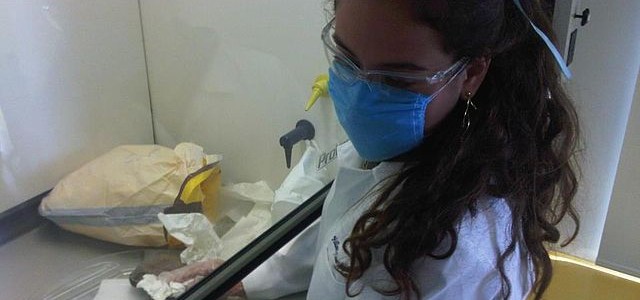 Do women majoring in STEM disciplines in countries other than the United States encounter the same challenges to persistence that we’ve identified in our universities? A June 2014 article in the International Journal of Qualitative Studies in Education by Garcia Villa and Gonzalez y Gonzalez suggests they do. The authors of “Women Students in Engineering… Read more »
Do women majoring in STEM disciplines in countries other than the United States encounter the same challenges to persistence that we’ve identified in our universities? A June 2014 article in the International Journal of Qualitative Studies in Education by Garcia Villa and Gonzalez y Gonzalez suggests they do. The authors of “Women Students in Engineering… Read more »
 A recently published PLoS One article on sexual harassment of trainees in scientific fieldwork is getting a lot of social media attention according to Altmetric. Clancy et al. report in “Survey of Academic Field Experiences (SAFE): Trainees Report Harassment and Assault” (DOI: 10.1371/journal.pone.0102172) that a majority of fieldwork participants have experienced sexual harassment, with women… Read more »
A recently published PLoS One article on sexual harassment of trainees in scientific fieldwork is getting a lot of social media attention according to Altmetric. Clancy et al. report in “Survey of Academic Field Experiences (SAFE): Trainees Report Harassment and Assault” (DOI: 10.1371/journal.pone.0102172) that a majority of fieldwork participants have experienced sexual harassment, with women… Read more »
 One more post on the ALA Annual Conference, and then I’ll move onto other topics. I was particularly struck by the insights of speaker Carissa Tomlinson at the panel session, “Sticking with STEM: How the Academic Library Can Help to Retain Successful Students,” co-sponsored by ACRL’s Science and Technology Section and Health Sciences Interest Group…. Read more »
One more post on the ALA Annual Conference, and then I’ll move onto other topics. I was particularly struck by the insights of speaker Carissa Tomlinson at the panel session, “Sticking with STEM: How the Academic Library Can Help to Retain Successful Students,” co-sponsored by ACRL’s Science and Technology Section and Health Sciences Interest Group…. Read more »
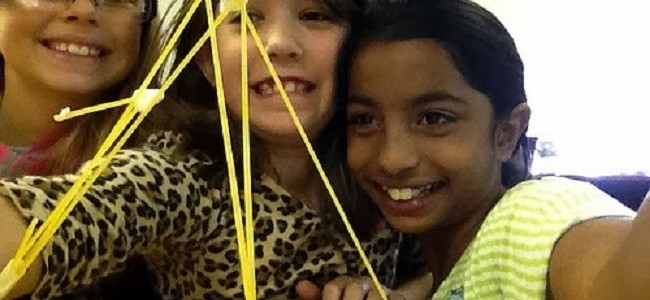 I hope many of you took time from gambling to attend the panel session, “Sticking with STEM: How the Academic Library Can Help to Retain Successful Students” at the ALA Annual Conference 2014 in Las Vegas. The program was co-sponsored by ACRL’s Science and Technology Section and Health Sciences Interest Group, and featured three speakers…. Read more »
I hope many of you took time from gambling to attend the panel session, “Sticking with STEM: How the Academic Library Can Help to Retain Successful Students” at the ALA Annual Conference 2014 in Las Vegas. The program was co-sponsored by ACRL’s Science and Technology Section and Health Sciences Interest Group, and featured three speakers…. Read more »
 Precious Hardy and Mara Aruguete at Lincoln University of Missouri have presented a promising assessment tool in “Needs Assessment in STEM Disciplines: Reliability, Validity and Factor Structure of the Student Support Needs Scale (SSNS),” published in a 2014 issue of Assessment & Evaluation in Higher Education. The scale assesses six areas of support from the… Read more »
Precious Hardy and Mara Aruguete at Lincoln University of Missouri have presented a promising assessment tool in “Needs Assessment in STEM Disciplines: Reliability, Validity and Factor Structure of the Student Support Needs Scale (SSNS),” published in a 2014 issue of Assessment & Evaluation in Higher Education. The scale assesses six areas of support from the… Read more »
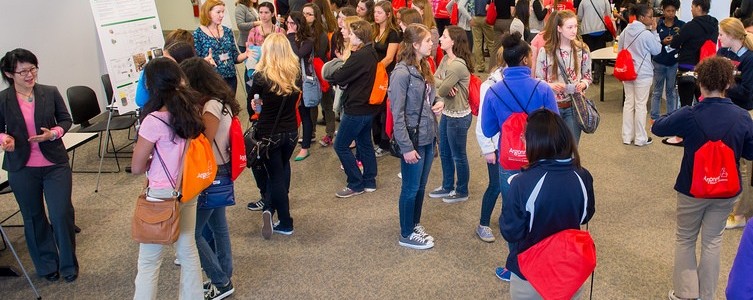 The Engage to Excel executive report issued by the President’s Council of Advisors on Science and Technology in 2012 made five recommendations to produce one million STEM graduates by 2022. Recommendation 4 is “[e]ncourage partnerships among stakeholders to diversify pathways to STEM careers” (p.7) and related Action 4-4 is “[improve] data provided by the Department… Read more »
The Engage to Excel executive report issued by the President’s Council of Advisors on Science and Technology in 2012 made five recommendations to produce one million STEM graduates by 2022. Recommendation 4 is “[e]ncourage partnerships among stakeholders to diversify pathways to STEM careers” (p.7) and related Action 4-4 is “[improve] data provided by the Department… Read more »
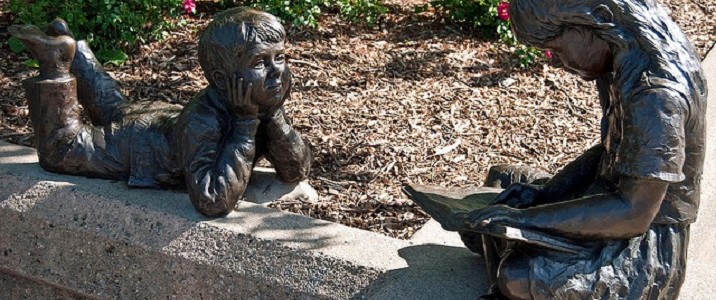 Amy Leask, guest blogger on Recruiting Women Technoblog, makes a convincing argument in “STEM, Girls and the Importance of Storytelling,” to engage young women in STEM by using storytelling. She’s not talking about storytelling around the campfire, but giving a social context to STEM facts and theories. She encourages educators to share with students the… Read more »
Amy Leask, guest blogger on Recruiting Women Technoblog, makes a convincing argument in “STEM, Girls and the Importance of Storytelling,” to engage young women in STEM by using storytelling. She’s not talking about storytelling around the campfire, but giving a social context to STEM facts and theories. She encourages educators to share with students the… Read more »
 I encourage librarians who are researching undergraduate STEM retention or developing retention strategies to reach out and share your findings and experiences beyond the library profession. An obvious audience for the library science perspective is the education profession, which can be reached through a number of publications. Journal of Research in Science Teaching, Journal of… Read more »
I encourage librarians who are researching undergraduate STEM retention or developing retention strategies to reach out and share your findings and experiences beyond the library profession. An obvious audience for the library science perspective is the education profession, which can be reached through a number of publications. Journal of Research in Science Teaching, Journal of… Read more »
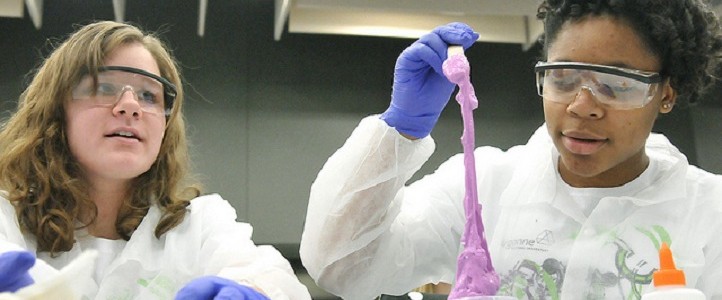 Last year, The Huffington Post started the HuffPost Girls in STEM Mentorship Program to match up more than 500 girls with mentors in science and engineering. The news publication has created the Girls in STEM webpage to chronicle the mentorship program and promote discussion on how to attract and keep girls in STEM. The webpage… Read more »
Last year, The Huffington Post started the HuffPost Girls in STEM Mentorship Program to match up more than 500 girls with mentors in science and engineering. The news publication has created the Girls in STEM webpage to chronicle the mentorship program and promote discussion on how to attract and keep girls in STEM. The webpage… Read more »
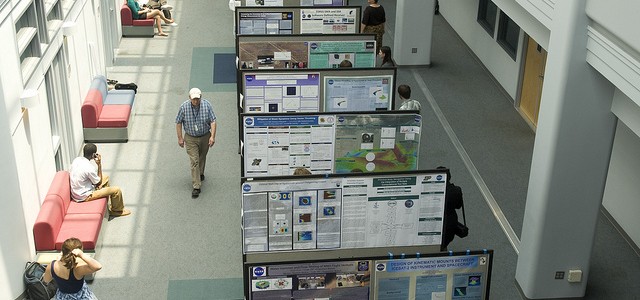 The theme of ACRL’s Science and Technology Section (STS) Theme Poster Session at the ALA Annual Conference in Las Vegas this summer is: How can librarians assist with student diversity and retention in the STEM and health science fields at their institutions? The posters will be exhibited on Monday, June 30, 2014, from 10:30… Read more »
The theme of ACRL’s Science and Technology Section (STS) Theme Poster Session at the ALA Annual Conference in Las Vegas this summer is: How can librarians assist with student diversity and retention in the STEM and health science fields at their institutions? The posters will be exhibited on Monday, June 30, 2014, from 10:30… Read more »
 Do women majoring in STEM disciplines in countries other than the United States encounter the same challenges to persistence that we’ve identified in our universities? A June 2014 article in the International Journal of Qualitative Studies in Education by Garcia Villa and Gonzalez y Gonzalez suggests they do. The authors of “Women Students in Engineering… Read more »
Do women majoring in STEM disciplines in countries other than the United States encounter the same challenges to persistence that we’ve identified in our universities? A June 2014 article in the International Journal of Qualitative Studies in Education by Garcia Villa and Gonzalez y Gonzalez suggests they do. The authors of “Women Students in Engineering… Read more »
 Do women majoring in STEM disciplines in countries other than the United States encounter the same challenges to persistence that we’ve identified in our universities? A June 2014 article in the International Journal of Qualitative Studies in Education by Garcia Villa and Gonzalez y Gonzalez suggests they do. The authors of “Women Students in Engineering… Read more »
Do women majoring in STEM disciplines in countries other than the United States encounter the same challenges to persistence that we’ve identified in our universities? A June 2014 article in the International Journal of Qualitative Studies in Education by Garcia Villa and Gonzalez y Gonzalez suggests they do. The authors of “Women Students in Engineering… Read more »


 A recently published PLoS One article on sexual harassment of trainees in scientific fieldwork is getting a lot of social media attention according to Altmetric. Clancy et al. report in “Survey of Academic Field Experiences (SAFE): Trainees Report Harassment and Assault” (DOI: 10.1371/journal.pone.0102172) that a majority of fieldwork participants have experienced sexual harassment, with women…
A recently published PLoS One article on sexual harassment of trainees in scientific fieldwork is getting a lot of social media attention according to Altmetric. Clancy et al. report in “Survey of Academic Field Experiences (SAFE): Trainees Report Harassment and Assault” (DOI: 10.1371/journal.pone.0102172) that a majority of fieldwork participants have experienced sexual harassment, with women…  One more post on the ALA Annual Conference, and then I’ll move onto other topics. I was particularly struck by the insights of speaker Carissa Tomlinson at the panel session, “Sticking with STEM: How the Academic Library Can Help to Retain Successful Students,” co-sponsored by ACRL’s Science and Technology Section and Health Sciences Interest Group….
One more post on the ALA Annual Conference, and then I’ll move onto other topics. I was particularly struck by the insights of speaker Carissa Tomlinson at the panel session, “Sticking with STEM: How the Academic Library Can Help to Retain Successful Students,” co-sponsored by ACRL’s Science and Technology Section and Health Sciences Interest Group….  I hope many of you took time from gambling to attend the panel session, “Sticking with STEM: How the Academic Library Can Help to Retain Successful Students” at the ALA Annual Conference 2014 in Las Vegas. The program was co-sponsored by ACRL’s Science and Technology Section and Health Sciences Interest Group, and featured three speakers….
I hope many of you took time from gambling to attend the panel session, “Sticking with STEM: How the Academic Library Can Help to Retain Successful Students” at the ALA Annual Conference 2014 in Las Vegas. The program was co-sponsored by ACRL’s Science and Technology Section and Health Sciences Interest Group, and featured three speakers….  Precious Hardy and Mara Aruguete at Lincoln University of Missouri have presented a promising assessment tool in “Needs Assessment in STEM Disciplines: Reliability, Validity and Factor Structure of the Student Support Needs Scale (SSNS),” published in a 2014 issue of Assessment & Evaluation in Higher Education. The scale assesses six areas of support from the…
Precious Hardy and Mara Aruguete at Lincoln University of Missouri have presented a promising assessment tool in “Needs Assessment in STEM Disciplines: Reliability, Validity and Factor Structure of the Student Support Needs Scale (SSNS),” published in a 2014 issue of Assessment & Evaluation in Higher Education. The scale assesses six areas of support from the…  The Engage to Excel executive report issued by the President’s Council of Advisors on Science and Technology in 2012 made five recommendations to produce one million STEM graduates by 2022. Recommendation 4 is “[e]ncourage partnerships among stakeholders to diversify pathways to STEM careers” (p.7) and related Action 4-4 is “[improve] data provided by the Department…
The Engage to Excel executive report issued by the President’s Council of Advisors on Science and Technology in 2012 made five recommendations to produce one million STEM graduates by 2022. Recommendation 4 is “[e]ncourage partnerships among stakeholders to diversify pathways to STEM careers” (p.7) and related Action 4-4 is “[improve] data provided by the Department…  Amy Leask, guest blogger on Recruiting Women Technoblog, makes a convincing argument in “STEM, Girls and the Importance of Storytelling,” to engage young women in STEM by using storytelling. She’s not talking about storytelling around the campfire, but giving a social context to STEM facts and theories. She encourages educators to share with students the…
Amy Leask, guest blogger on Recruiting Women Technoblog, makes a convincing argument in “STEM, Girls and the Importance of Storytelling,” to engage young women in STEM by using storytelling. She’s not talking about storytelling around the campfire, but giving a social context to STEM facts and theories. She encourages educators to share with students the…  I encourage librarians who are researching undergraduate STEM retention or developing retention strategies to reach out and share your findings and experiences beyond the library profession. An obvious audience for the library science perspective is the education profession, which can be reached through a number of publications. Journal of Research in Science Teaching, Journal of…
I encourage librarians who are researching undergraduate STEM retention or developing retention strategies to reach out and share your findings and experiences beyond the library profession. An obvious audience for the library science perspective is the education profession, which can be reached through a number of publications. Journal of Research in Science Teaching, Journal of…  Last year, The Huffington Post started the HuffPost Girls in STEM Mentorship Program to match up more than 500 girls with mentors in science and engineering. The news publication has created the Girls in STEM webpage to chronicle the mentorship program and promote discussion on how to attract and keep girls in STEM. The webpage…
Last year, The Huffington Post started the HuffPost Girls in STEM Mentorship Program to match up more than 500 girls with mentors in science and engineering. The news publication has created the Girls in STEM webpage to chronicle the mentorship program and promote discussion on how to attract and keep girls in STEM. The webpage…  The theme of ACRL’s Science and Technology Section (STS) Theme Poster Session at the ALA Annual Conference in Las Vegas this summer is: How can librarians assist with student diversity and retention in the STEM and health science fields at their institutions? The posters will be exhibited on Monday, June 30, 2014, from 10:30…
The theme of ACRL’s Science and Technology Section (STS) Theme Poster Session at the ALA Annual Conference in Las Vegas this summer is: How can librarians assist with student diversity and retention in the STEM and health science fields at their institutions? The posters will be exhibited on Monday, June 30, 2014, from 10:30… 